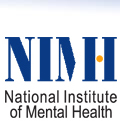
Second in a Series
July 16, 2003
Washington, DC
| Resource Guide (PDF file, 7 pages) | Issues and Suggestions Chart (PDF file, 8 pages) |
Workshop Summary
On July 16, 2003, the Division of Services and Intervention Research (DSIR) of the National Institute of Mental Health (NIMH) hosted "Internet-based Research Interventions in Mental Health: How Are They Working?" in Washington, D.C. The workshop's objective was to review current tools and resources available to NIMH investigators to assess and implement Internet intervention efforts and to identify the need for NIMH to refine those resources and tools and/or develop new ones for future research. Participants included NIMH and National Institutes of Health (National Institute on Drug Abuse and the National Institute on Alcohol Abuse and Alcoholism) staff and grantees or consultants who were already engaged in supporting or conducting Internet-based research.
This workshop is the second in a series sponsored by the NIMH to address issues surrounding Internet usage in clinical research funded by the NIMH. In November 2000, the NIMH sponsored a one-day workshop entitled "Consider This: Cyber Interventions in Mental Health—Ethical Considerations." As part of this meeting was to help participants gauge the ethical issues surrounding Internet usage in clinical research funded by the NIMH, DSIR staff developed risk minimization strategies for use in Internet-based research interventions. The "Risk Minimization Strategies" chart developed in November 2000 addressed vulnerability of participants in mental health care research, electronic informed consent, and privacy and confidentiality.
Almost three years after the first workshop, the NIMH wanted to gauge the usefulness of the chart among NIMH grantees. "Internet-based Research Interventions in Mental Health: How Are They Working?" focused on researchers' "real world" issues with Internet-based research interventions. Key points that emerged during the workshop included:
- Reaching target populations: Barriers to successful use of Internet interventions for mental health include physical issues (visual and dexterity problems); cognitive issues (memory and attention impairments, problems with abstract concepts); language; low reading ability (material is too complex for adults with low reading levels to comprehend); computer access and literacy/anxiety; cultural issues; and a lack of sensitivity in Web site design for people with mental disorders (e.g., competing images, dense text, distracting pop-up windows).
- (Electronic) informed consent: Participants were concerned about research volunteers' capacity to give consent without in-person communication. They stressed that traditional, in-person informed consent methods are also imperfect and electronic informed consent should not be held to a higher standard. In consideration of the fallibility of in-person informed consent procedures, further questions were raised regarding its suitability as a "backup" for electronic consent gathering. Participants also heard about NIMH-funded research for an electronic informed consent authoring system.
- Privacy and security: Researchers would benefit from seeking advice from a variety of experts in technology, data security, privacy, and confidentiality related to research interventions using the Internet and the research participants involved. These experts should be part of the study's design to anticipate usability problems that may affect research participants' safety. Other security issues that must be considered include online photos and signatures, which may be "stolen" from Web site pages and used inappropriately. Workshop participants were cautioned to use digitization and encryption tools to protect images and signatures on their intervention Web sites.
- Internet trends: Researchers should consider a "multi-modal" approach to Internet design for their interventions, whereby cultural, visual, audio, and semantic requirements of the target audience are considered. At the same time that new technological trends are embraced, it is vital for investigators to understand and give consideration to both the intervention and the technology being used in their research. With this in mind, researchers should be open to incorporating Internet/computer literacy assessments and training research participants involved in their studies, if necessary.
- "Risk Minimization" chart assessment: Workshop participants assessed the "Risk Minimization Strategies" chart developed from the November 2000 meeting. They recommended improving the chart's tone by developing an introduction section and including more positive points about Internet-related research. Workshop participants felt the chart should include more recommendations on preventing suicidal contagion and should convey the importance of researchers including information technology/bioinformatics personnel in the design of Internet studies. Based on this feedback and discussion at the workshop, the NIMH has updated the chart, now called "Internet-based Research Interventions: Issues and Suggestions."
- Internet and Literature Resource Guide: The NIMH compiled a list of federal and other resources available to researchers using the Internet to deliver mental health interventions. The guide lists relevant federal government Web sites and literature citations about accessibility; HIPAA (Health Insurance Portability and Accountability Act of 1996); informed consent (multimedia/electronic); privacy/confidentiality; and security. This guide will be updated periodically.
E-mail communications, psychoeducational programs, depression screening surveys, various types of online chat rooms, and electronic informed consent are a few examples of the ways in which federally funded researchers are incorporating the Internet into their mental health interventions. This workshop revealed that many researchers use both the Internet and traditional forms of communication (phone, written, face-to-face) to conduct interventions. Three years after the first workshop, researchers are still coming to terms with the possibilities and limitations the Internet offers for their research. The NIMH will continue to monitor this evolving field and to assess the needs and experiences of its grantees using the Internet in their intervention efforts.
|

